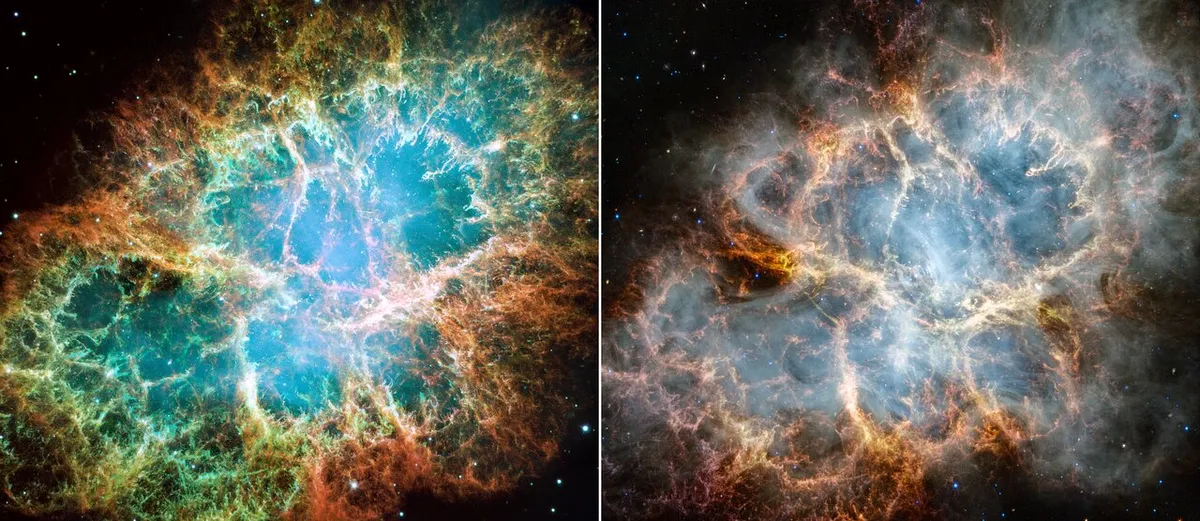The James Webb Space Telescope captured a new image of the famous Crab Nebula, the remnant of an exploded star.
Webb’s NIRCam (Near-Infrared Camera) and MIRI (Mid-Infrared Instrument) revealed new details in the Crab Nebula, never seen before.
In particular, Webb's view of cosmic dust in the Crab Nebula could help astronomers learn more about how that dust is distributed across the remnant.
See the latest James Webb Space Telescope images
A short history of the Crab Nebula

The Crab Nebula, also known as M1, is a supernova remnant: all that remains of an exploded star.
It's located 6,500 lightyears away and can be found in the constellation Taurus.
The Crab Nebula appears in an astronomical record of 1054 by 11th century Chinese astronomers.
It was famously sketched by William Parsons, the Third Earl of Rosse, famous for the Great Leviathan Telescope at Birr Castle in Ireland.
Parsons produced his sketch of the Crab Nebula while observing it through his 36-inch reflector in the mid-19th century.
This is the drawing that gave the nebula its 'Crab' moniker.
The Crab Nebula continues to be a favoured object of amateur astronomers and astrophotographers, but is also of key interest to space scientists seeking to learn more about the processes that govern supernova remnants like this.
Webb's view of the Crab Nebula

James Webb Space Telescope's view of the Crab Nebula reveals the remnant in greater detail than the previous Hubble Space Telescope image.
In red and orange, we see a structure of gaseous filaments, while yellow-white and green represent emission from dust grains with the central regions of the Crab.
Webb's infrared vision shows a process known as synchrotron radiation, which is emission from charged particles moving around magnetic field lines.
This radiation appears as an ethereal, smoky substance within the central structure of the nebula, and is caused by a pulsar at the heart of the Crab.
Pulsars are spinning neutron stars, and this particular pulsar's magnetic fields are accelerating particles to very high speeds.
This causes them to emit radiation as they interact with magnetic field lines, which can be distinctly seen in Webb's infrared view.

The stellar wind produced by the pulsar is pushing the shell of cosmic gas and dust that forms the Crab Nebula outwards into space.
This is why the filaments appear to be longer towards the upper right side of the nebula, as this is the direction in which the pulsar is moving.
Astronomers studying the Crab Nebula now have new data and images from which to uncover the secrets of this famous target.
But, within the next year or so, they will also be able to utilise a new image of the Crab Nebula currently being captured by the Hubble Space Telescope.
Watch this space…
